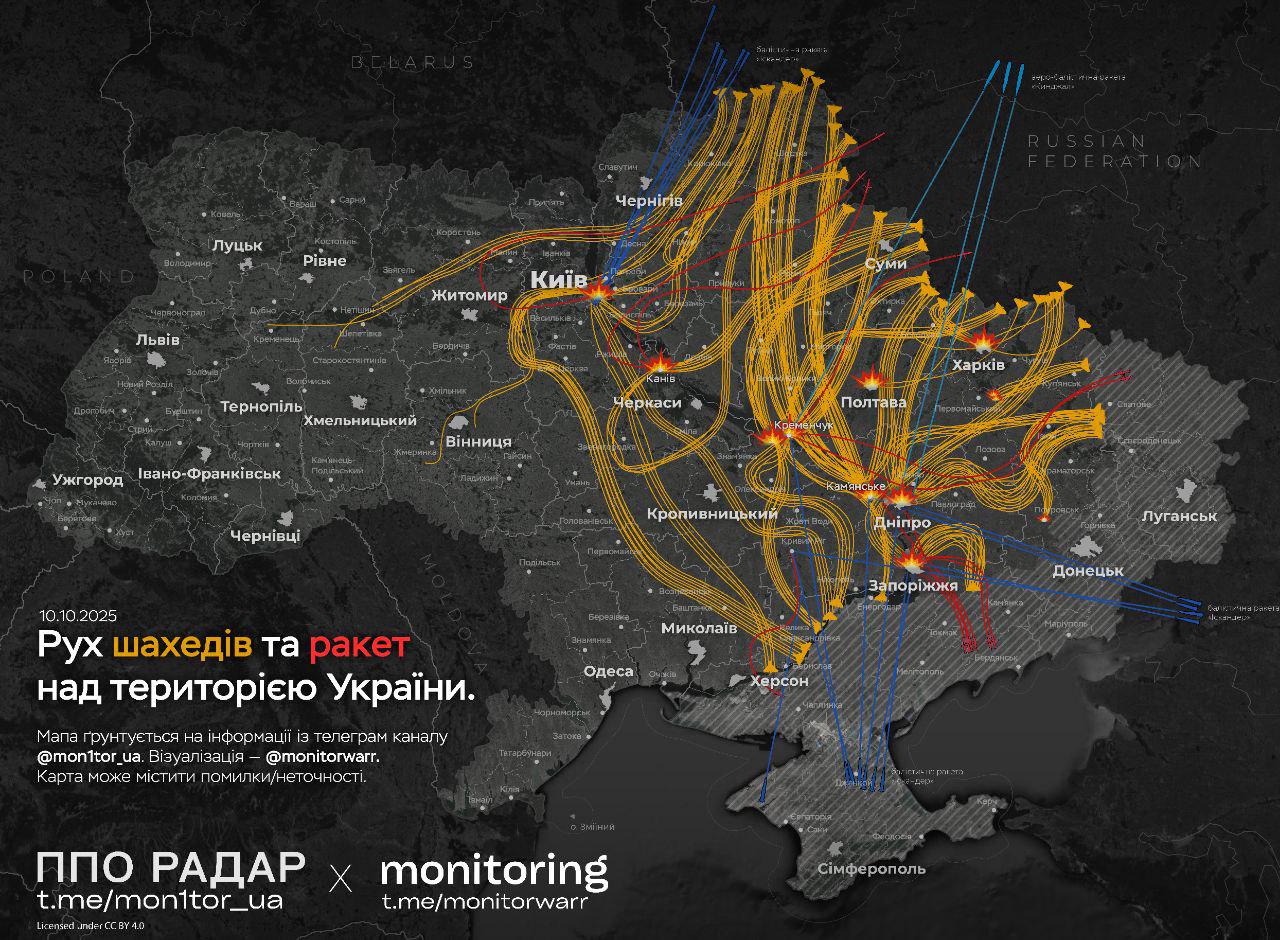Map of Today's Air Attacks on Ukraine's Energy Infrastructure


Marcus Rodriguez
Historical Geography Expert
Marcus Rodriguez specializes in historical cartography and geographic data analysis. With a background in both history and geography, he brings unique...
Geographic Analysis
What This Map Shows
The map titled "Today's Air Attack on Ukraine" provides a comprehensive visualization of the recent strikes launched against critical energy infrastructure across Ukraine. It highlights the targeted regions where significant damage has occurred, particularly focusing on power generation facilities including hydroelectric power plants (HPPs), thermal power plants (TPPs), and combined heat and power plants (CHPs). The visualization indicates that the enemy's campaign has intensified, particularly affecting the left bank of Kyiv, leading to widespread power outages and emergency blackout schedules across multiple regions.
Using various munitions such as Iskander-K and Iskander-M missiles, Kh-59 cruise missiles, and UAVs, the strikes have been aimed at disrupting the energy supply, which is vital for both civilian life and military operations. The targeted areas include Kyiv, Cherkasy, Poltava, Dnipropetrovsk, Zaporizhzhia, Chernihiv, Sumy, and Kharkiv, illustrating a systematic assault on the very backbone of Ukraine's energy infrastructure.
Deep Dive into Ukraine's Energy Infrastructure
Energy infrastructure is a critical component of any nation’s economy and security. In Ukraine, the energy sector comprises a mix of sources including nuclear, hydroelectric, thermal, and renewable energies. Ukraine has historically relied heavily on coal and natural gas, with numerous thermal power plants (TPPs) and combined heat and power plants (CHPs) playing essential roles in electricity generation and heating.
Hydroelectric power plants (HPPs) also contribute a significant portion of the energy mix, taking advantage of Ukraine's river systems. However, as we see in the current conflict, these facilities are now prime targets for air strikes. The recent attacks on four HPPs, two TPPs, and two CHPs indicate a deliberate strategy to incapacitate the energy supply, especially as we head into winter when energy demands peak due to heating requirements.
The map shows the geographical spread of these attacks, which is crucial for understanding how energy supply chains are disrupted. The impact of these strikes extends beyond immediate power outages; they can lead to long-term damage to infrastructure, affecting maintenance and future energy production capabilities. The use of advanced munitions such as KABs (with various guidance systems) indicates a sophisticated level of targeting, raising concerns over the resilience of Ukraine's energy infrastructure to withstand such assaults.
Interestingly, the attacks have not only targeted energy generation facilities but also transformers and substations, which are vital for the distribution of power. This comprehensive assault strategy is designed to create chaos and hinder the ability to restore power quickly.
Regional Analysis
The map reveals varying degrees of impact across different regions of Ukraine. For instance, Kyiv, the capital, has faced immediate and severe consequences with power outages affecting the entire left bank. This is particularly critical given that Kyiv is not only the political capital but also a major economic hub.
In contrast, regions like Dnipropetrovsk and Zaporizhzhia, while also targeted, have shown varying levels of resilience due to their mix of energy sources and the geographical spread of their infrastructure. Dnipropetrovsk, rich in industrial centers, relies on both TPPs and HPPs, making it vulnerable yet essential for the overall energy economy of Ukraine.
Moreover, the Chernihiv, Kharkiv, and Sumy regions have been significantly impacted, with multiple strikes noted in the map which reflects how concentrated attacks can lead to cascading failures in electricity distribution networks across neighboring areas. The strategy of targeting multiple regions simultaneously indicates an effort to stretch resources thin and complicate recovery efforts.
Significance and Impact
The ongoing attacks on Ukraine's energy infrastructure underscore the strategic importance of energy security in warfare. As we witness these developments, it becomes evident that controlling energy resources can significantly alter the dynamics of conflict. Disrupting energy supply not only affects civilian life but also military operations, as troops and equipment rely heavily on consistent power and heating.
The implications of these attacks extend beyond immediate power outages. They can lead to economic destabilization, increased humanitarian crises, and long-term challenges in infrastructure recovery. What’s fascinating is how such attacks might shape international responses and support for Ukraine, as nations recognize the critical need for energy security in times of conflict.
As we look ahead, the resilience of Ukraine's energy infrastructure will be tested, and the outcome may influence future strategies in both military and civilian contexts. The battle for energy—often termed the "battle for light"—is not just a physical confrontation but also an ideological one, where the ability to maintain power can symbolize resistance and hope amidst adversity.
These developments remind us of the intricate relationship between geography, energy, and security, illustrating how maps can provide not just data, but also crucial insights into the world’s geopolitical landscape.
Visualization Details
- Published
- October 10, 2025
- Views
- 60
Comments
Loading comments...